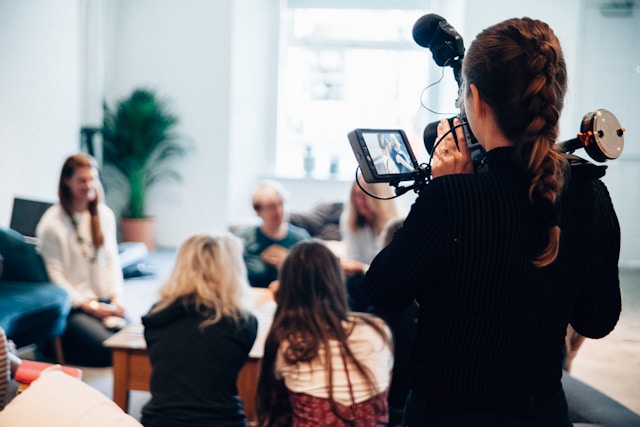データが重視される現代のマーケティングにおいて、消費者の行動を深く理解することは、効果的な戦略を立てる上で欠かせない。
実験手法やフィールドリサーチは、マーケティングを成功に導くための重要なインサイトを提供する。このページでは、実験の設計や実施方法、フィールドリサーチの活用法、そして実際のケーススタディから学ぶポイントを紹介する。
実験デザイン
マーケティングにおける実験デザインの進め方。
1. 明確な仮説の設定
- マーケティング理論や観察に基づいた具体的で検証可能な仮説を定義する
- 仮説がマーケティング目標に関連していることを確認する
2. 実験変数の選択
- 独立変数(操作する要素)を特定する
- 従属変数(測定する結果)を決定する
- 結果に影響を与える外部変数をコントロールする
3. 実験デザインの選択
- ランダム化比較試験(RCT)
- A/Bテスト
- 要因デザイン
- 被験者内デザイン
4. サンプルサイズと構成の決定
- 統計的有意性を確保するための必要サンプルサイズを計算する
- ターゲット層を代表するサンプルを選定する
5. 厳格なコントロールの実施
- 変数の効果を分離するために対照群を設定する
- 可能であれば二重盲検法を取り入れる(思い込みによる効果(プラセボ効果)を排除して信頼性のあるデータを採るため)
6. 結果の分析と解釈
- 適切な統計手法を用いる
- 統計的有意性だけでなく、実際の有意性も考慮する
7. 倫理的配慮
- 参加者からインフォームドコンセントを取得する
- 参加者のプライバシーとデータのセキュリティを保護する
フィールドリサーチ
フィールドリサーチは、現実世界の消費者とのやり取りや好みを捉え、コンテキストに富んだインサイトを提供する。以下は、効果的なフィールドリサーチを実施するための主要な手法である。
1. 観察調査
- 自然な環境での消費者行動を直接観察
- ミステリーショッピングで顧客体験を評価
2. エスノグラフィックリサーチ
- 消費者の文化やサブカルチャーを深く調査
- オンラインコミュニティを対象としたデジタルエスノグラフィー
3. 深層インタビュー
- 消費者やステークホルダーとの1対1のインタビュー
- 集団的なインサイトを得るためのフォーカスグループ
4. モバイルエスノグラフィー
- モバイルアプリを活用したリアルタイムでのデータ収集
- ロケーションに特化したインサイトのためのジオタグ付きの回答
5. ダイアリースタディ
- 長期間にわたる消費者行動の縦断的な調査
- デジタル日記やプロンプトを用いた応答法
6. 文脈的調査
- 消費者の自然な環境での観察とインタビュー
- 実際の状況での製品使用の理解
7. 参加型アクションリサーチ
- 消費者をリサーチプロセスに参加させる
- ターゲットオーディエンスと共に解決策を共同作成
ケーススタディ
企業が採用する具体的な研究手法は、詳細に公表されることはほとんどない。 そのため、以下に示すケーススタディは、観察可能な市場トレンドや公開情報に基づいた仮説であり、実際の事例を完全に再現しているものではない。これらのケーススタディは、実験手法やフィールドリサーチがどのように活用され、インサイトを得てマーケティング戦略を改善に繋げることができるかを示す架空の例として捉えてほしい。
ケーススタディ1: Eコマース企業のチェックアウトプロセスの最適化
企業: Amazon
手法: A/Bテスト
目的: 購入完了率を向上させ、購入プロセスを簡略化すること
アプローチ(仮想)
Amazonは、チェックアウトプロセスを改善するために「ワンクリック注文」システムを開発。
仮想シナリオでは、以下のようにA/Bテストが実施されたと想定:
- バージョンA: 従来の複数ステップのチェックアウトプロセス
- バージョンB: 新しいワンクリック注文システム
訪問者をランダムに2つのバージョンに割り当て、コンバージョン率や購入時間、顧客満足度を測定。
テストの詳細(仮想)
- 期間: 30日間
- サンプルサイズ: 1,000,000人
- 主要指標: コンバージョン率、平均注文額、顧客満足度
結果(仮想)
コンバージョン率への影響:
- バージョンB(ワンクリック)は、バージョンAと比較してコンバージョン率を5%向上させた。
- この一見小さな増加は、Amazonの規模を考えると、何百万ドルもの追加収益に相当した。
購入時間:
- ワンクリック注文は、購入を完了するまでの平均時間を80%短縮した。
- このような摩擦の著しい減少は、衝動買いとリピート買いを促した。
顧客満足度:
- 調査によると、ワンクリック注文を使用した人の顧客満足度スコアが10%上昇した。
- 顧客は、新しいシステムの利便性とスピードを評価した。
モバイルへの影響:
- モバイルデバイスでは、影響はさらに顕著で、コンバージョン率が10%増加した。
- これは、モバイルショッピングがますます重要になるにつれて、特に重要であった。
長期的な影響
- Amazonは1999年にワンクリック注文システムを特許取得し、大きな競争優位を獲得した。
- このシステムはAmazonの主要な差別化要因となり、Eコマースにおける支配的地位に貢献した。
- 後に他の企業がAmazonからこの技術のライセンスを取得したことは、業界全体への影響を示している。
重要なポイント
- 小さなUX変更は、消費者行動とビジネス成果に大きな影響を与える可能性がある。
- 購入プロセスの摩擦を減らすことで、コンバージョン率と顧客満足度を大幅に高めることができる。
- チェックアウトプロセスのイノベーションは、長期的な競争優位を提供できる。
- UX変更の影響は、モバイルプラットフォームでさらに顕著になる可能性がある。
- 革新的なUX機能を特許取得することで、直接的な利益と潜在的なライセンス収入を得ることができる。
ケーススタディ2: ミレニアル世代のコーヒー消費を理解する
注: このケーススタディは、スターバックスの事例を参考にしていますが、あくまで架空の例であり、具体的な数値や詳細は異なる可能性があります。
企業: Starbucks(仮想)
手法: エスノグラフィックリサーチ
目的: ミレニアル世代向けにフラペチーノのラインをリニューアルし、彼らの嗜好にアピールする
アプローチ(仮想)
インタビューと観察調査:
- 100店舗で3,000時間以上の店内観察を実施
- 500人のミレニアル世代の顧客にコーヒーの嗜好やライフスタイルについてインタビュー
SNS分析:
- コーヒーやフラペチーノに関連するInstagram投稿100万件、ツイート50万件を分析
- 異なる飲料に対するトレンドハッシュタグやエンゲージメント率をモニタリング
共創ワークショップ:
- 各15〜20人のミレニアル世代のコーヒー愛好家を集めた20回のワークショップを開催
- 参加者に理想のフラペチーノのフレーバーとデザインを作成させた
調査の詳細(仮想)
- 期間: 6ヶ月
- ターゲット層: ミレニアル世代(23〜38歳)
- 主要な焦点: フレーバーの嗜好、ビジュアルの魅力、カスタマイズの選択肢、健康志向
結果(仮想)
トレンドの特定:
- カスタマイズ可能で視覚的に魅力的な飲料への強い関心を確認
- プラントベースミルクや自然甘味料への関心の高まりを発見
- 限定版や季節限定のフレーバーに対するニーズを特定
製品開発:
- カスタマイズが可能な「フラペチーノブレンド飲料」を導入
- Unicorn FrappuccinoやS’mores Frappuccinoなど、視覚的に魅力的な新フレーバーを発表
- 顧客自身がフラペチーノのバリエーションを作成しシェアする「シークレットメニュー」コンセプトを導入
マーケティング戦略:
インフルエンサーと提携して、独自のフラペチーノを作成・プロモーション結果(仮想)
Instagramを中心としたマーケティングキャンペーンを展開し、#StarbucksFrappuccinoのタグを使った写真シェアを促進
ビジネスインパクト(仮想)
- フラペチーノのミレニアル世代での売上が、導入後の第1四半期で20%増加
- ミレニアル世代の顧客層が翌年に15%拡大
- ミレニアル世代のStarbucksに関するSNS投稿が40%増加
長期的な影響
- フラペチーノのリニューアルの成功により、会社全体がより革新的で視覚重視の製品開発へシフト。
- Starbucksのモバイルアプリも、カスタマイズを簡単にする機能を追加し、ミレニアル世代の好みに対応。
重要なポイント
- 深い文化的インサイトが、製品イノベーションと市場拡大を推進
- ミレニアル世代は、パーソナライズやビジュアルの魅力を重視
- InstagramなどのSNSは、ミレニアル世代の消費行動に重要な役割を果たす
- ターゲット層と共同で製品を開発することで、より関連性の高い成功した製品を生み出せる
- 限定版や「シークレットメニュー」の提供は、若年層の関心を引き、エンゲージメントを高める効果がある
このケーススタディは、Starbucksがエスノグラフィックリサーチを通じて、ミレニアル世代のコーヒー消費習慣や嗜好を深く理解するためにどのようにアプローチするかを仮想的に示している。
結論
実験的手法とフィールドリサーチは、消費者行動に関する深い洞察を得て、マーケティング戦略を検証する強力なツールである。
厳密な実験設計を行い、多様なフィールドリサーチ技法を駆使し、実世界のケーススタディから学ぶことで、マーケターはビジネスの成功を導くデータに基づいた意思決定を行うことができる。
効果的な研究の鍵は、特定のマーケティング目標に合わせて手法を調整し、結果に基づいてアプローチを継続的に改善することにある点を忘れてはならない。
